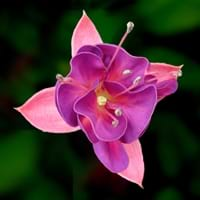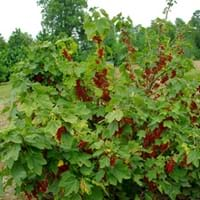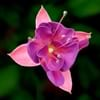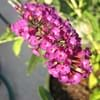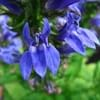Life Span
Perennial
Perennial
Type
Tender Perennial
Fruit
Origin
Caribbean
Europe, Central Asia, Western Asia
Types
Fuchsia Decidua, Fuchsia Fulgens, Fuchsia Splendens, Fuchsia Microphylla
Rovada, ‘Red Lake’ AGM, Junifer
Number of Varieties
Not Available
Habitat
Forest edges, Woods
Broad-Leaved Forests, shores, Stream side
USDA Hardiness Zone
9-10
3-8
Sunset Zone
16, 17, 23, 24
Not Available
Habit
Arching/Fountain-shaped
Upright/Erect
Flower Color
Orange Red
Green
Flower Color Modifier
Not Available
Bicolor
Fruit Color
Not Available
White, Red, Pink, Ivory
Leaf Color in Spring
Purple, Dark Green
Green
Leaf Color in Summer
Purple, Dark Green
Green
Leaf Color in Fall
Purple, Dark Green
Yellow, Green
Leaf Color in Winter
Unknown
Light Green
Leaf Shape
Long Linear
Maple shaped
Plant Season
Spring, Summer, Fall, Winter
Summer
Sunlight
Full Sun, Partial Sun, Partial shade
Full Sun, Partial Sun, Partial shade
Growth Rate
Medium
Medium
Type of Soil
Clay, Loam, Sand
Loam
The pH of Soil
Acidic, Neutral
Acidic, Neutral
Soil Drainage
Average
Well drained
Bloom Time
Indeterminate
Early Spring, Spring
Tolerances
Drought
Drought
Where to Plant?
Container, Ground, Pot
Container, Ground, Pot
How to Plant?
Seedlings, Stem Planting, Transplanting
Divison, Seedlings
Plant Maintenance
Medium
Medium
Watering Requirements
Requires regular watering
occasional watering once established, Requires watering in the growing season
In Summer
Lots of watering
Lots of watering
In Spring
Moderate
Moderate
In Winter
Average Water
Average Water
Soil pH
Acidic, Neutral
Acidic, Neutral
Soil Type
Clay, Loam, Sand
Loam
Soil Drainage Capacity
Average
Well drained
Sun Exposure
Full Sun, Partial Sun, Partial shade
Full Sun, Partial Sun, Partial shade
Pruning
Prune in spring, Prune lower leaves, Remove dead or diseased plant parts, Remove deadheads, Remove shoots
Prune every year, Prune to half of its height, Prune to stimulate growth
Fertilizers
All-Purpose Liquid Fertilizer
Citrus, Fertilize every year
Pests and Diseases
Rhizoctonia Root Rot, Rust
Aphids, Birds, Borers, Red blotch
Plant Tolerance
Drought
Drought
Flower Petal Number
Single
Single
Foliage Texture
Medium
Medium
Foliage Sheen
Matte
Not Available
Attracts
Hummingbirds
Birds
Allergy
Asthma, Hay fever
Asthma
Aesthetic Uses
Showy Purposes
Showy Purposes
Beauty Benefits
Not Available
Not Available
Environmental Uses
Air purification
Not Available
Medicinal Uses
Not Available
Iron, Phosphorus, Vitamin B, Vitamin C
Part of Plant Used
Flowers, Fruits
Fruits, Whole plant
Other Uses
Not Available
Culinary use, Used As Food, Used as Ornamental plant
Used As Indoor Plant
Yes
Yes
Used As Outdoor Plant
Yes
Yes
Garden Design
Bedding Plant, Container, Feature Plant, Foundation, Hedges, Tropical
Edible, Fruit / Fruit Tree, Hedges, Mixed Border
Botanical Name
FUCHSIA triphylla
RIBES rubrum
Common Name
Fuchsia
Red Currant
In Hindi
फ्यूशिया
Red Currant
In German
Fuchsie
Rote Johannisbeere
In French
Fuchsia
Groseille
In Spanish
Fucsia
Grosella
In Greek
φουξία
Κόκκινη σταφίδα
In Portuguese
Fúcsia
Groselha
In Polish
Fuksja
Porzeczkowy
In Latin
Fuchsia
red RIBES
Phylum
Magnoliophyta
Magnoliophyta
Class
Dicotyledonae
Magnoliopsida
Family
Onagraceae
Grossulariaceae
Clade
Angiosperms, Eudicots, Rosids
Angiosperms, Core eudicots, Eudicots
Tribe
Not Available
Not Available
Subfamily
Not Available
Not Available
Number of Species
Not Available
Difference Between Fuchsia and Red Currant
If you are confused whether Fuchsia or Red Currant are same, here are some features about those plants to help you choose better. Many people think that these two plants have the same characteristics, but one can see Fuchsia and Red Currant Information and learn more about it. Fertilizers required for proper growth of Fuchsia are All-Purpose Liquid Fertilizer, whereas for Red Currant fertilizers required are Citrus and Fertilize every year. Hence, one should know the basic difference between Fuchsia and Red Currant if you are planning to have them in your garden to enhance its beauty.
<
Flowering PlantsImportance of Fuchsia and Red Currant
Want to have the most appropriate plant for your garden? You might want to know the importance of Fuchsia and Red Currant. Basically, these two plants vary in many aspects. Compare Fuchsia and Red Currant as they differ in many characteristics such as their life, care, benefits, facts, etc. Every gardener must at least have the slightest clue about the plants he wants to plant in his garden. Compare their benefits, which differ in many ways like facts and uses. The medicinal use of Fuchsia is Not Available whereas of Red Currant is Iron, Phosphorus, Vitamin B and Vitamin C. Fuchsia has beauty benefits as follows: Not Available while Red Currant has beauty benefits as follows: Not Available.
Compare Facts of Fuchsia vs Red Currant
How to choose the best garden plant for your garden depending upon its facts? Here garden plant comparison will help you to solve this query. Compare the facts of Fuchsia vs Red Currant and know which one to choose. As garden plants have benefits and other uses, allergy is also a major drawback of plants for some people. Allergic reactions of Fuchsia are Asthma and Hay fever whereas of Red Currant have Asthma respectively. Having a fruit bearing plant in your garden can be a plus point of your garden. Fuchsia has no showy fruits and Red Currant has showy fruits. Also Fuchsia is flowering and Red Currant is not flowering . You can compare Fuchsia and Red Currant facts and facts of other plants too.
